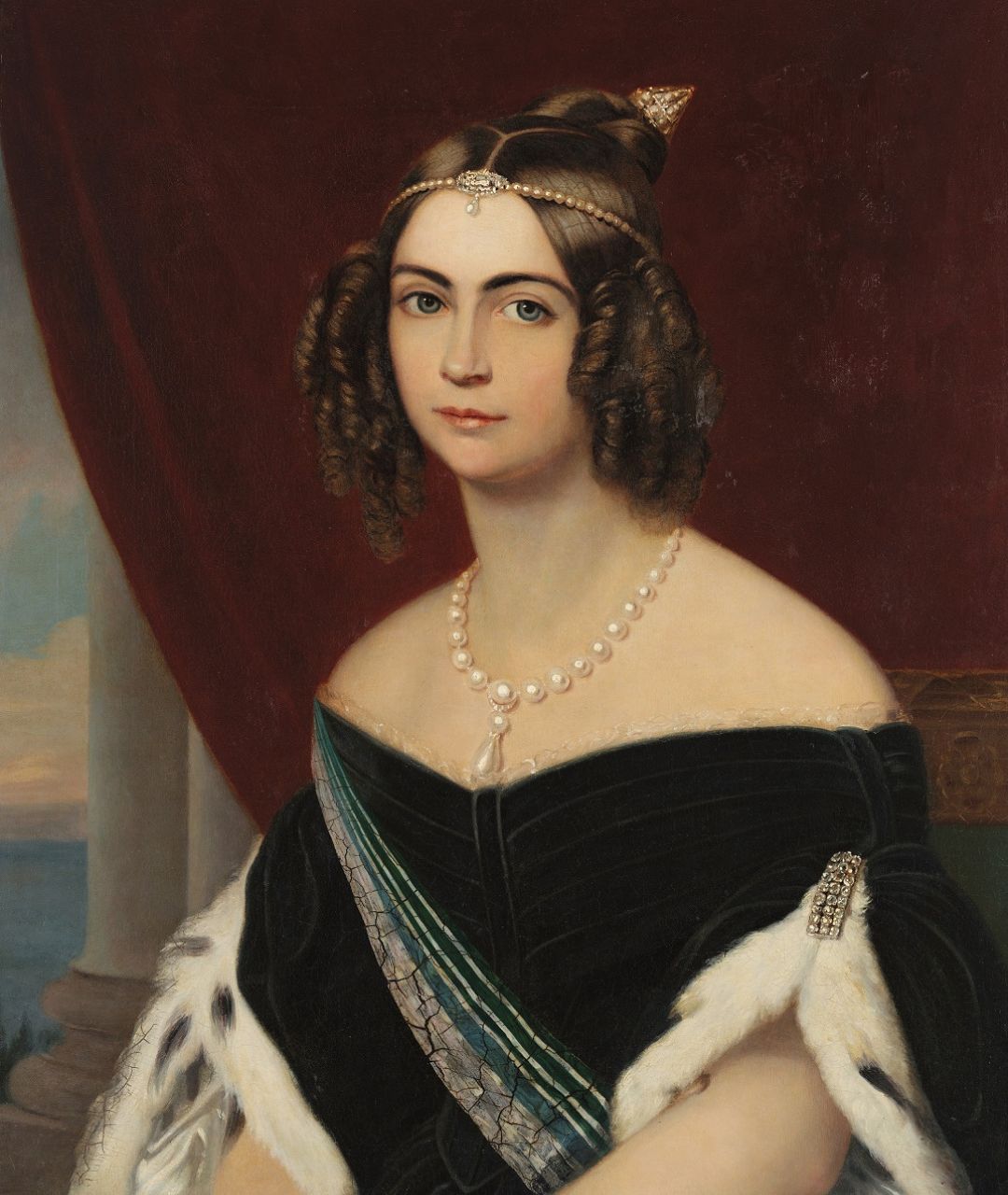Amélia Augusta Eugênia Napoleona was the second wife of D. Pedro I, Emperor of Brazil (Pedro IV, King of Portugal). She was Empress Consort of the Empire of Brazil from 1829 to 1831.
Born on the 31st of July 1812 in Milan and died on the 26th January 1873 in Lisbon. Daughter of Prince Eugénio, Duke of Leuchtenberg, and his wife, Princess Augusta of Bavaria.
She is represented in the Soares dos Reis National Museum, in the oil on canvas by Friedrich Durck, a German portrait painter.
The Empress is portrayed half-length, wearing a black velvet dress (she had recently been widowed and would mourn for the rest of her life), with stoat decorations on the sleeves. She wears a pearl necklace and a dainty pearl tiara. Her hair is divided into three parts, with a bun on top of her head (secured in place with a conical pin, also made of pearls) and loose curls on the side. She is sitting on a chair from which a section of the carved, gilded backrest is visible. The backdrop features a red drapery and, to the left, a column with its respective base. In the background a small stretch of a sea or river can be seen.
In 1838, D. Amélia travelled to Bavaria, where she presumably had her portrait painted alongside her daughter D. Maria Amélia by the painter Joseph Karl Stieler (Mainz 1781- Munich 1858).
Apparently, from this portrait, several others were made in which the Empress is depicted in exactly the same pose, with the same garments and accessories and with the same elements as scenery, but alone, that is, without the figure of her daughter, D. Maria Amélia.
These portraits are distributed among various collections in Europe and Brazil (Paço Ducal de Vila Viçosa, Museu Militar de Lisboa, Fundação Maria Luisa e Oscar Americano, São Paulo, Museu Imperial de Petropolis, Royal Palace of Stockholm, as well as others in private collections in Brazil and Germany).
Tose versions however have been attributed to Friedrich Dürk, disciple and nephew of Stieler, who allegedly prepared a portrait of D. Amélia for an engraving edition, in which his name appears as the author of the original painting. However, the source of all these portraits, even the one executed by Stieler, may in fact be a triple portrait, depicting D. Pedro IV, D. Maria III and D. Amélia (now in the Cultural Center of Casa Pia de Lisboa), dated 183 and signed by Maurício do Carmo Sendim (1786-1870).
In that portrait, D. Amélia is depicted with her face in the same position and wearing exactly the same hairstyle and jewellery. The twist of the torso and the colour of the dress differ (which, incidentally, is of the same cut as the dress depicted in the portraits attributed to Stieler and Dürck).
The portrait of D. Amélia in the collection of the Soares dos Reis National Museum differs from all the others in that the Empress is depicted wearing a blue, green and white fabric sash, crossed over her torso.

